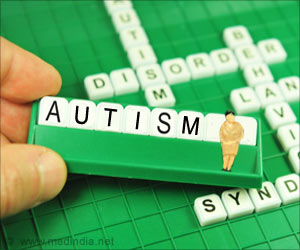- Autism is a neurological disorder that affects normal development in the brain.
- Overload of connections in the brain found to begin early in the mammalian development.
Patrick Kanold, UMD Biology Professor and senior study author, said, "Our work suggests that the neural pathology of autism manifests in the earliest cortical circuits, formed by a cell type called subplate neurons."
"Nobody has looked at developing circuits this early, in this level of detail, in the context of autism before. This is truly a new discovery and potentially represents a new paradigm for autism research."
The cerebral cortex is the outer part of the brain that controls memory, perception, language and abstract reasoning. Subplate neurons may form their first connections with the cerebral cortex.
As soon as the brain is developed, the interconnected neurons may build a scaffolding network which supports other neurons that may grow later in development.
"Because our findings implicate the earliest stages of cortex circuit formation in a mouse model, they suggest that the pathological changes leading to autism might start before birth in humans."
The research team studied the relationship between autism and subplate neuron development by using a well-established mouse model of autism. The mouse embryos were dosed with valproic acid (VPA) on day 12 of their 20 day gestation period by injecting the drug to the mother mouse.
Valproic acid is associated with autism in humans and found to induce autism-like cognitive and behavioral abnormalities in mice. Example: valproic acid treated mouse pups do not produce high pitched noises when separated from their littermates.
The research team used a technique called laser scanning photostimulation which can map the connections between the neuron cells in the brains of the mouse pups.
Some patches of “hyperconnected” subplate neurons were seen in VPA-dosed mice before the first week of birth. However, normal connections throughout their cortical tissue were seen in control mice that were dosed with plain saline solution.
After ten days of birth, hyperconnected neurons had grown more widespread when compared to the control pups.
Kanold, explained, "Subplate neurons form critical developmental structures. If their early progress is impaired, later development of the cortex is also impaired."
"In a developing human fetus, this stage is a critical gateway, when subplate neuron circuits are the most abundant."
The author also said that the hyperconnections in the cerebral cortex may lead to neural pathologies which are observed in the human autism.
Subplate neurons that develop are very short in mice as well as in humans.
Nagode, said, "The timing of the effects is important. The hyperconnectivity in VPA pups occurs only in small patches a few days after birth."
"But after 10 days, the hyperconnectivity becomes much more widespread."
In mice the neuron development takes place usually after birth, while in humans they are formed during the second trimester. Most of the subplate neurons have already disappeared by the time humans are formed.
Kanold, said, "Our results suggest that we might have to interfere quite early to address autism."
"The fetal brain is not just a small adult brain, and these subplate neurons are the major difference. There may, in fact, be other developmental disorders we can tackle using this information."
Autism
Autism is a neurological disorder which usually occurs before the age of 3. It may have a strong impact on brain development.
Facts and Statistics
- Autism was first discovered by Dr. Leo Kanner in 1943.
- 1 in 68 children is now affected with autism.
- 40% of the children with autism do not speak.
- Autism is diagnosed more often in boys than girls.
- 30-50% of autism children have seizures.
- Facts about Autism - (https://www.autismspeaks.org/what-autism/facts-about-autism)
- Autism Fact Sheet - (http://nationalautismassociation.org/resources/autism-fact-sheet/)
- Quick Facts About Autism - (http://autismsciencefoundation.org/what-is-autism/quick-facts-about-autism/)
Source-Medindia













